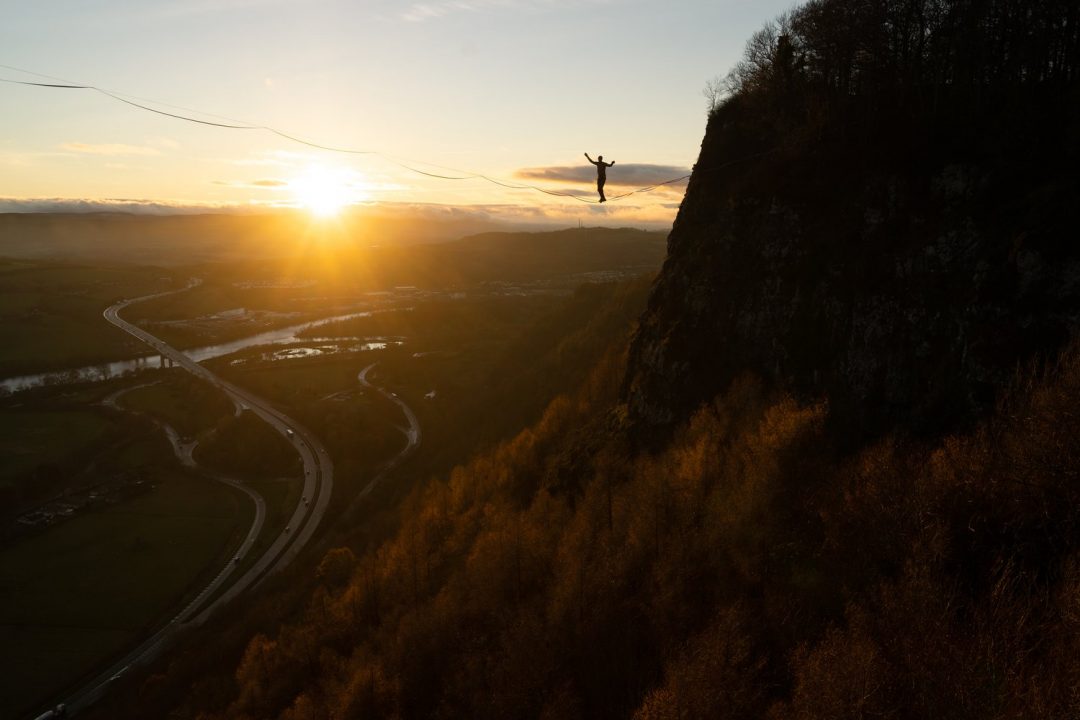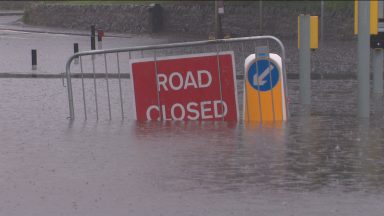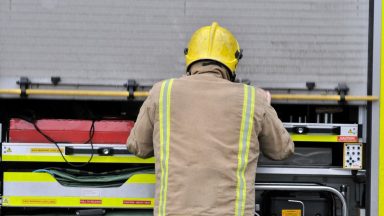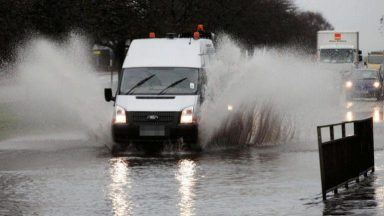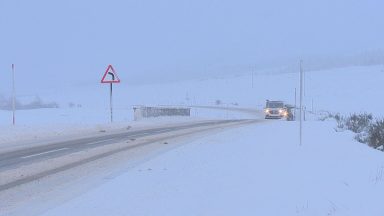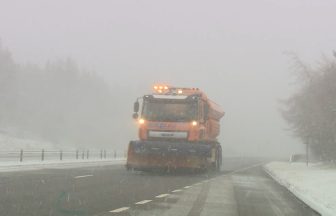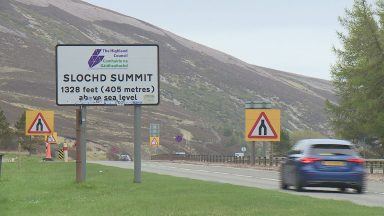Owen Hope spends his spare time walking hundreds of feet in the air.
The Inverness adventurer took up the sport of slacklining at the start of lockdown and has travelled around the country to perform the feat at some of Scotland’s best-loved beauty spots.
The 23-year-old has highlined at a variety of places including the Falls of Foyer, Stac Pollaidh, the cliffs at Arbroath, Plodda Falls and the Old Man of Stoer.
Slacklining is a sport with various disciplines which involves moving along a flat rope, referred to as webbing, suspended between two anchors. Highlining involves typically longer distances at height on one-inch webbing while tethered to the line.
Hope threw himself into slacklining during lockdown – walking along a flat strap suspended between two anchors – after he photographed a friend taking part in Fife in December, 2019.
More than two years on, Owen slacklines most days and highlines at least once every fortnight, sharing jaw-dropping footage and images on his photography page.
“People find slacklining very difficult to begin with, but as a balance sport the improvement curve is steep and you can learn fast with practice,” he said.
“It took me one year of slacklining to be able to walk a highline. Some people take a lot longer. I practiced very intensely and put a lot of effort into psychological preparation, perhaps accelerating my journey more than others.”
Owen’s biggest achievement so far is walking along a rope 140 metres and back, known as an “on-site full-man”.
But his favourite was the line he rigged with friends Severin Domela and Michael Lehmann on Stac Pollaidh in June.
Despite the sport appearing to be incredibly high risk, Owen insists highlining is incredibly safe and is done using certified equipment.
He explained that falling is “inevitable” and highliners who slip hang between 1-1.5 metres below the leash rope and can use their harness to hoist themselves back up.
He added: “I understand that highlining has the iconography of something that is adrenaline filled and crazy, but I find the experience to be very different.
“It is not dangerous or terrifying, but a sense of achievement logistically and physically.
“People often assume I have no fear of heights. I, like pretty much every healthy individual on the earth, have a rational fear of heights in that I do not want to hit the ground after falling from high above.
“But, because I have learned how to carefully rig safe highlines, I am not afraid of weighting on the line when I fall. This process slowly but surely brings highlining into the comfort zone.”
Owen, who is a student and health and social care practitioner, advised people who want to try slacklining to practice walking and mounting a 30-metre line in the park and to make sure they can climb a leash.
“Then, get in touch with me and we’ll try to get you on a highline,” he said.
“Highlining has given me somewhere to focus a lot of my energy and has allowed me to meet people who I now know to be some of my best friends.
“Despite looking a certain way, highlining does not have to be dangerous or full of adrenaline. Our highlining is not like this. I’d never get on a highline that I wouldn’t hang my entire family off of.”
Follow STV News on WhatsApp
Scan the QR code on your mobile device for all the latest news from around the country


